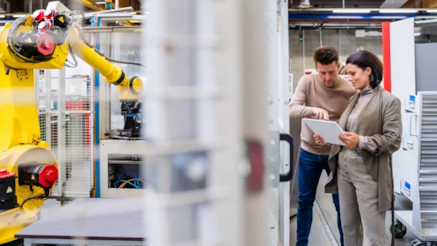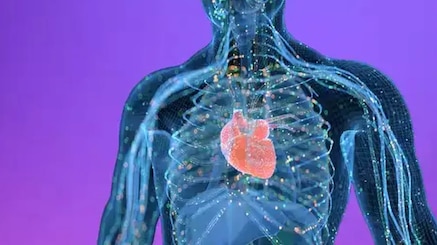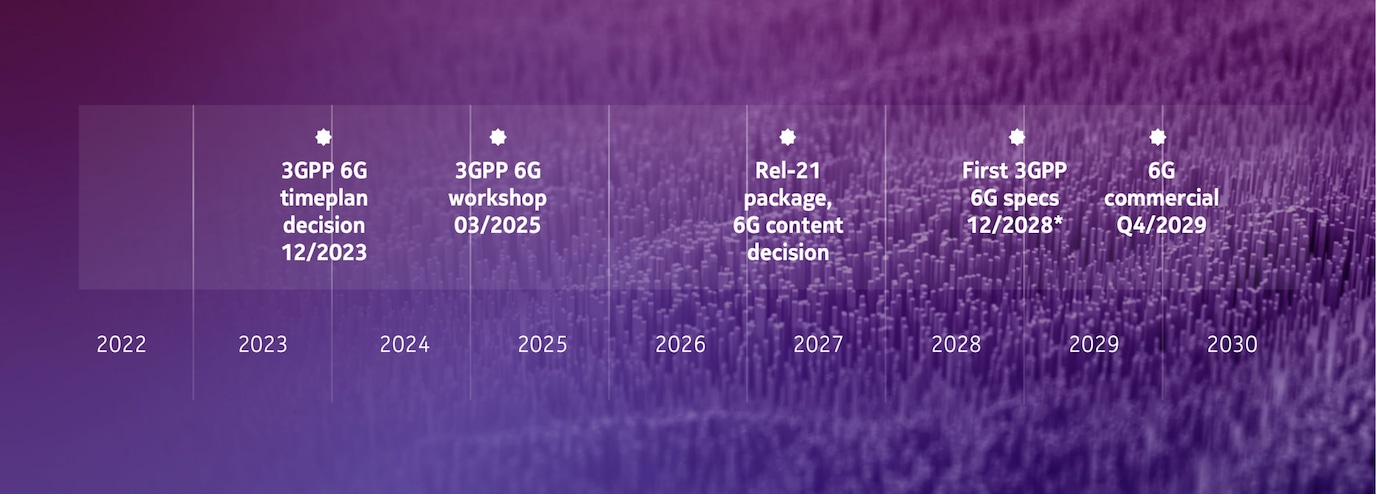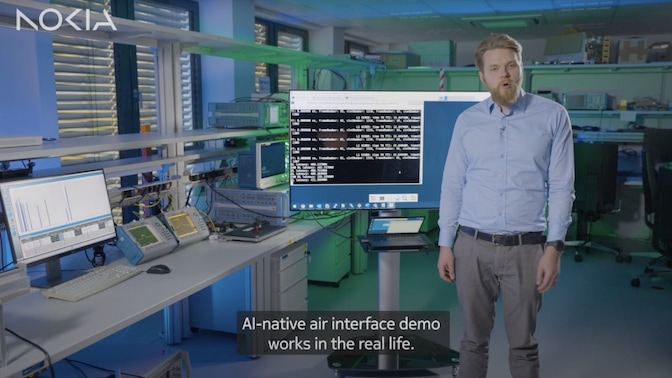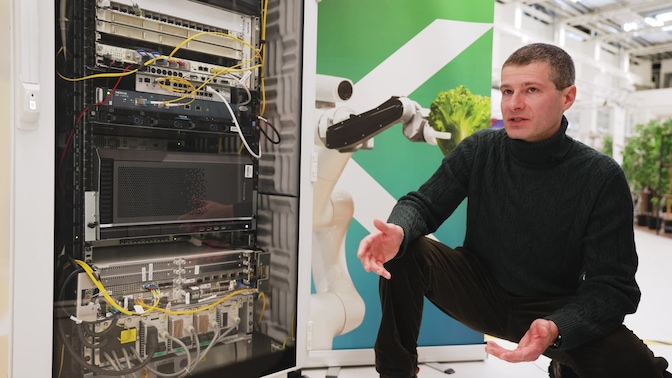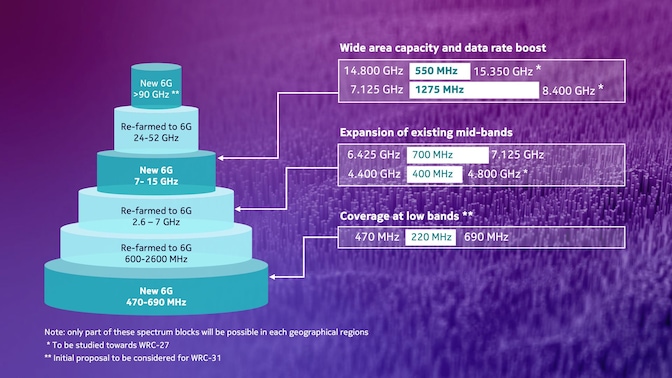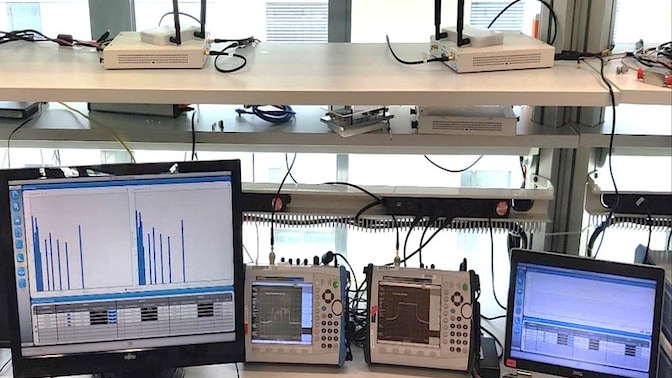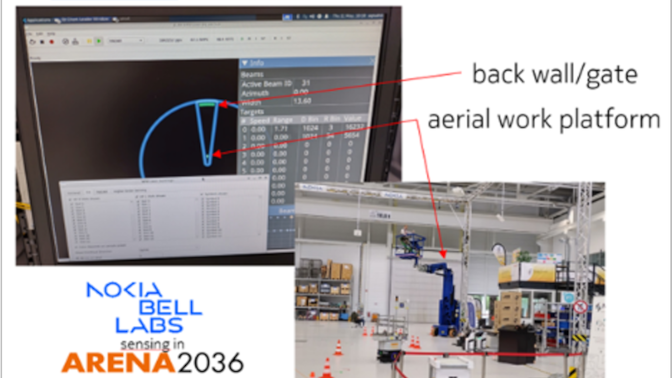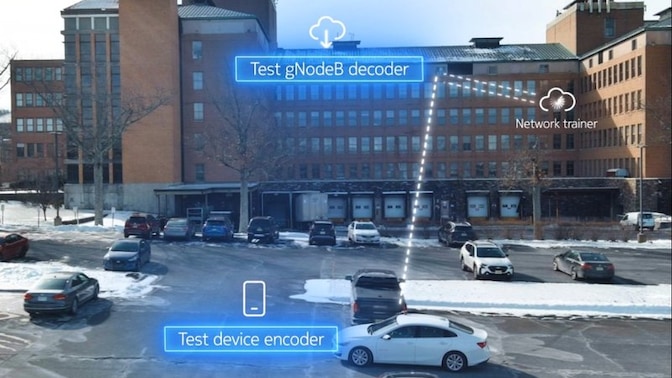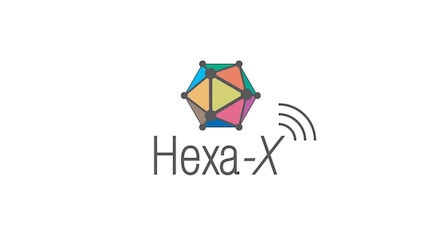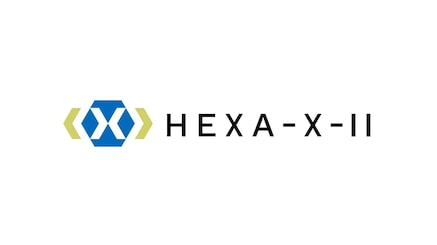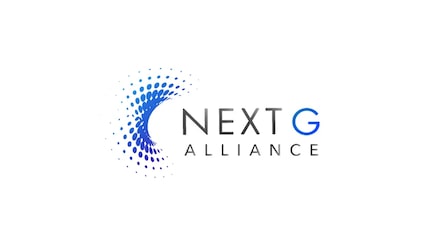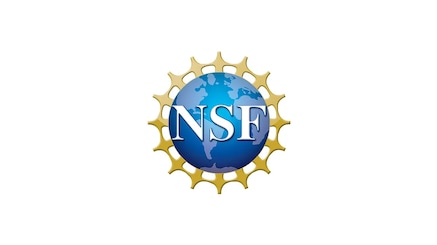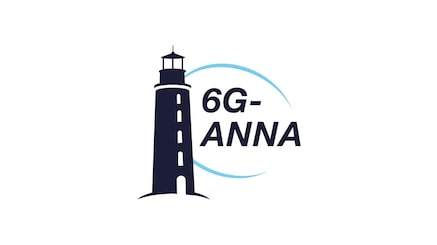How 6G will transform technology and business
6G will radically transform what a network can do, unleashing new potential in the people and business that use these networks. 6G will fuse the physical, digital and human worlds, allowing us to intuitively move between and to interact with the digital and physical realities.
What is 6G?
Cellular communications over the past 30 years have brought unprecedented benefits to humankind. 2G and 3G unleashed the potential of human mobility and connectivity. 4G gave us greater access to information and social engagement. 5G linked us to the wealth of data from machines and sensors.
In the 6G era, networking will move beyond mere connectivity. 6G networks will fuse the digital, physical and human worlds, opening the door to extrasensory experiences. Intelligent knowledge systems will be combined with robust computation capabilities, merging network, application and processor roles.
Expanding the network’s purpose and function will make humans more productive while altering how we live, work and care for the planet.
Experience the latest Brooklyn 6G Summit
2024 theme was "6G - from vision to action"
What will a world with 6G networks look like?
Industry
Digital twins
6G will generate digital twins of heavy industrial machinery and even entire factories, for exponential optimization.
Healthcare
Diagnostics & monitoring
Healthcare diagnostics and hospital monitoring will tap into 6G and remote imaging, making MRIs and ultrasounds more accessible.
When are 6G networks coming?
6G is expected to become commercially available around 2030, but we’re already close to making it a reality. The first 6G specification will appear in 3GPP Release 21, targeted for completion around Q4 2028. Initial commercial 6G deployments will follow a year later.
Nokia Bell Labs has already researched and, in many cases, trialed the technologies that will make up 6G, taking a leadership role in the 6G standardization process – and ultimately determining how networks are built, what services they offer and who will use them.

5G-Advanced standards
3GPP Standardization: Enhancing 5G capabilities and paving the path to 6G.
What can we expect? 6 key 6G technologies
In 2020, Nokia identified six key 6G technologies that will become vital for future 6G networks.
Cognitive, automated and specialized architectures
Learn about the seven distinct design criteria that defining 6G architecture
Security, trust and privacy
Find out how 6G embodies a new vision for secure and trustworthy communications
Read the 6G eBooks
6G technology spotlight
Networks and AI: Enabling the AI-native air interface
By pairing an AI-based learned waveform in a transmitter with a deep-learning receiver, Nokia Bell Labs was able to design and implement a proof-of-concept air interface that transmits data efficiently and learns under many different scenarios. This is a fundamentally different way of how we currently implement the network, allowing the network radios to learn from its surroundings.
Network as a sensor: The digital “6th sense”
6G won’t just connect sensors to the network. 6G will act as a sensor itself. Acting similarly to radar, 6G networks will be able to sense their surroundings and the properties and movements of objects within them. This will imbue the network with a digital “sixth sense” that can extend our human senses to every point the network touches. Add AI/ML to the mix, and the 6G network will become more cognitive, unlocking deeper, actionable insight from the information it gathers.
6G networks and spectrum: Getting the right real-estate for the 6G era
You can think of every generation of networking as building a new home. The first thing you need to do is choose the land you wish to build on. The World Radiocommunication Conference’s recent spectrum decisions ensure we have a solid piece of real estate to establish 6G’s foundations.
The Golden Bands and the future of 6G - Read the article
Whom is Nokia working with on 6G networks?
Meet our partners. When we talk about 6G, we’re not speaking alone. Nokia and its research arm Bell Labs have been collaborating with every manner of company and institution to investigate 6G’s potential. As Nokia Chief Strategy and Technology Officer Nishant Batra points out, for 6G to be truly impactful, we must partner with and listen to as many future 6G stakeholders as possible.
If we want 6G to really matter, we must make collaboration the biggest priority.
Service providers
As they be the first to deploy 6G networks, Nokia has begun working closely with our forward-looking mobile customers to test 6G technologies. NTT, Docomo and SKT are working with Nokia Bell Labs to explore how AI will unlock new capabilities and enhance performance in 6G networks.
Industry and enterprise
Bosch and Nokia Bell Labs are evaluating industrial use cases for 6G joint communication and sensing with the aim of creating a new generation of smart factories
With Hololight, Nokia is investigating how new wireless technologies will allow networks to support multiple simultaneous XR sessions without sacrificing quality of experience.
Communications ecosystem
Nokia Bell Labs and Qualcomm are exploring the potential interoperability challenges between 6G networks and devices. By getting the different AI models in devices and networks to cooperate, we can tap into the advantages of multi-vendor AI world.
Nokia and Nvidia have announced we are investigating how the power of a digital twin could be used to simulate the entirety of a 6G network without ever venturing outside of a lab.
Academia
Every year, Nokia and NYU Wireless co-host the landmark Brooklyn 6G Summit, which brings together the brightest minds in academia, business and communications to scrutinize the most cutting-edge trends in network research.
In 2023, Nokia opened up its new 6G Lab in India to serve to collaborate with industry stakeholders to test new 6G technologies and applications with the potential for commercialization. Following up on the lab launch, we partnered with the Indian Institute of Science to jointly research 6G technologies that would have a direct societal impact on India.
We are leading the 6G ecosystem
Hexa-X
The very first 6G flagship research project in Europe, took place January 2021 – June 2023.
Hexa-X-II
Funded as part of the Smart Network and Services Joint Undertaking (SNS JU), Hexa-X-II aims to form the basis for 6G Standardization.
Next G Alliance
A nationwide initiative to advance North American mobile technology leadership over the next decade through private sector-led efforts.
NSF RINGS
Led by the US National Science Foundation, the Resilient and Intelligent Next-Generation Systems program, or RINGS, focuses on developing next-generation networking and computing systems.
6G-ANNA
A lighthouse project funded by the German government to drive 6G research and pre-standardization efforts in Europe.
Frequently asked questions
6G is the 6th Generation of cellular networking technology. The first generation dates back to the first analog mobile networks and continues to the current generation, 5G, which have been commercially deployed in many parts of the world. While specific technical specifications and standards for 6G are still in the very early stages of development, 6G holds promise for significant advancements in wireless communications.
6G has the potential to open the flood gates to a plethora of new services, applications and use cases. Collaborative robots, mass digital twinning, sensing, extreme autonomation and many more services are all in the realm of possibility under the 6G umbrella.
While the smartphone will remain a key device in the 6G era, new man-machine interfaces will make it more convenient to consume and control information and have truly immersive experiences for both commercial and professional users. These devices could take the form of new wearables, from XR glasses and connected clothing to AI-assistants.
While AI/ML plays a key role in 5G today, in 6G, AI/ML will go beyond being an enhancement to become a foundational technology. By taking a clean slate approach, we will eliminate the current complexity in the wireless air interface, and instead let AI/ML figure out how to best communicate between two endpoints. An AI-native 6G will change how we design, operate and optimize networks and devices.
We foresee superior deep-learning receiver performance, prediction-based energy efficiency, improved beam management and more predictable device performance as some of the key advancements enabled by native AI/ML.
The 3GPP and several other standards organizations have already begun to lay the groundwork for 6G specifications. The first official 6G standards will emerge with 3GPP Release 21, which is targeted for completion in late 2028.
While we may see trials of 6G systems as early as 2028, the first commercial, standardized 6G networks and devices are expected to go live in late 2029 in early-adopter countries. Those initial networks will be followed by large-scale 6G deployments globally in 2030.
The first commercial 6G devices will be available when the first 6G networks launch in 2029 and 2030, but as with previous generations, we likely won’t see smartphones or other mass-market consumer devices on day 1. The first devices will likely come in modem form factors, followed by smartphones, tablets and other devices as 6G gains more global traction.
It’s also important to note that 6G will support many new types of connected devices beyond phones. 6G could become embedded in sensors, wearables, internet appliances, drones, robots and industrial machinery.

